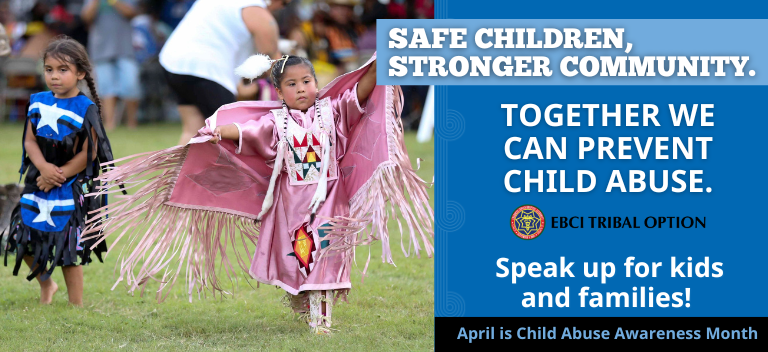April marks Child Abuse Prevention Month, a time dedicated to raising awareness about this critical issue that affects too many, especially within Native American communities. Native American children are disproportionately affected by abuse, a situation deeply rooted in historical, social, and cultural complexities and traumas. While Native Americans make up just 2% of the U.S. population, they account for over 15% of reported child abuse cases. That means Native children are seven times more likely to experience physical abuse, sexual abuse, neglect, or a combination of these harms than their peers. Among all demographic groups, American Indian and Alaska Native children face the highest rates of victimization.
These heartbreaking statistics don’t exist in a vacuum. They’re rooted in generations of historical trauma—boarding schools, forced family separations, and systemic injustices that continue to impact Native families today. That trauma doesn’t disappear. Instead, it often shows up in the form of Adverse Childhood Experiences, or ACEs.
What Are ACEs?
ACEs are traumatic events during childhood—like abuse, neglect, or witnessing domestic violence—that can shape a person’s health and well-being for the rest of their life. High ACE scores are linked to chronic illness, mental health struggles, substance use, and other serious outcomes in adulthood. And Native communities often carry a heavier ACE burden, not just individually, but collectively.
Understanding these traumas is vital for fostering resilience in children and families to help alleviate negative consequences Recognizing and understanding these traumas is the first step toward healing. When trauma goes unaddressed, it increases the risk of the cycle continuing. But when we invest in healing—through culturally rooted, community-led support—we can break that cycle. For instance, historical mistrust of external authorities may lead to hesitance in reporting suspected abuse, driven by fears of children being removed from their communities and placed in foster care. These complex traumas and not addressing them and understanding these can lead to the abuse cycle to continue.
Culture Is Medicine
Healing doesn’t come from just one program or one solution—it comes from connection. For the Cherokee Community, services like Analenisgi and other cultural and behavioral health resources are designed with this understanding at their core. These services recognize that our traditions, language, and sense of community are powerful tools for healing.
Child abuse prevention isn’t just about reacting after something happens. It’s about creating a world where families are supported before they reach a breaking point.
That means looking at the big picture—things like housing, access to care, mental health support, cultural reconnection, and community programs that lift families up. It also means making sure that our institutions—schools, hospitals, law enforcement—understand the unique history and needs of Native communities. Preventing child abuse through a social-ecological model acknowledges the variety of factors that influence caregivers’ capacity to nurture and protect their children. These factors operate at three levels: societal (e.g., federal and state policies, societal norms regarding parenting), systems (e.g., community collaborations to support families), organizational (i.e., the programs and policies of individual agencies), community (i.e., representing the voices of community members and leaders with lived experience), and the family itself.
The well-being of children is intrinsically linked to the well-being of their families and communities. To combat child abuse, we must consider the various factors affecting families, including government policies, community support, and family dynamics. In Native American communities, it is especially vital to prioritize family support over reactive measures to abuse. When a community actively supports its parents and children, it becomes easier for all families to flourish. We all have a role to play:
- Listen without judgment.
- Speak up when something doesn’t feel right.
- Support parents and caregivers, even in small ways.
- Share info about programs that can help.
Thriving families contribute to thriving communities. Every child deserves to grow up in a safe environment with hope for the future. Organizations like CIHA and other EBCI community resources are committed to providing culturally informed services to better assist the community.
When we protect children, we invest in the future of our entire community and can ensure the prosperity of the next seven generations.
Together we heal. Together we protect. Together we rise.
About EBCI Tribal Option
EBCI Tribal Option is an Indian Managed Care Entity (IMCE) contracted with NCDHHS to participate in North Carolina Medicaid. EBCI Tribal Option assists approximately 5,000 Tribal-eligible Medicaid beneficiaries, primarily in Cherokee, Haywood, Swain, Jackson, and Graham counties through providing managed care. For more information, visit EBCITribalOption.com.
